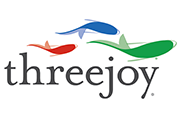Student-Centered versus Student-Led Education
It is increasingly commonplace to hear calls for student-centered education, but increasingly I’ve been thinking that the term doesn’t go far enough and have been using the term student-led learning instead.
First, a lot of language concerning education has teacher-centered bias built in. One example is the recommended shift from the sage on the stage, lecturing with 20-old course notes, to the guide on the side who practices active-learning, problem-based learning, experiential learning, or some other X learning in the classroom to the hoped benefit of the students. Indeed this shift is desirable, but the sage-guide shift still considers the instructor as the prime mover in the educational setting; the subject of both phrases, sage and guide, is the teacher. In this sense, education continues to be somthing that is done to or done for the student by the teacher.
Second, many of the most compelling educational experiences extant are those in which students genuinely lead the effort. Elsewhere (here and here), I have written about Junior Enterprise in Brazil and Europe as an exemplary model of students leading their own deep learning efforts, and other examples include student design competitions and significant capstone design experiences.
Embedded in this distinction are also important issues of control, trust, and courage (here). The kind of education that really unleashes students as confident lifelong learners who have the courage to take initiative depends, in part, on the ability of faculty members who can relinquish control and really trust students with a central role, a leadership role, in their own educations. Of course, this relinquishing of control should be measured and done thoughtfully in ways that students are capable of handling; however, too often the messages we send when we lecture and steer a course through a rigid syllabus with little or no flexibility or student choice are that the student is not capable to guide his or her own learning and that he or she cannot be trusted with even small decisions in their own education.
Framing the question as student-led learning rather than student-centered education is an important linguistic step in letting the kids drive the car of their own educations.
